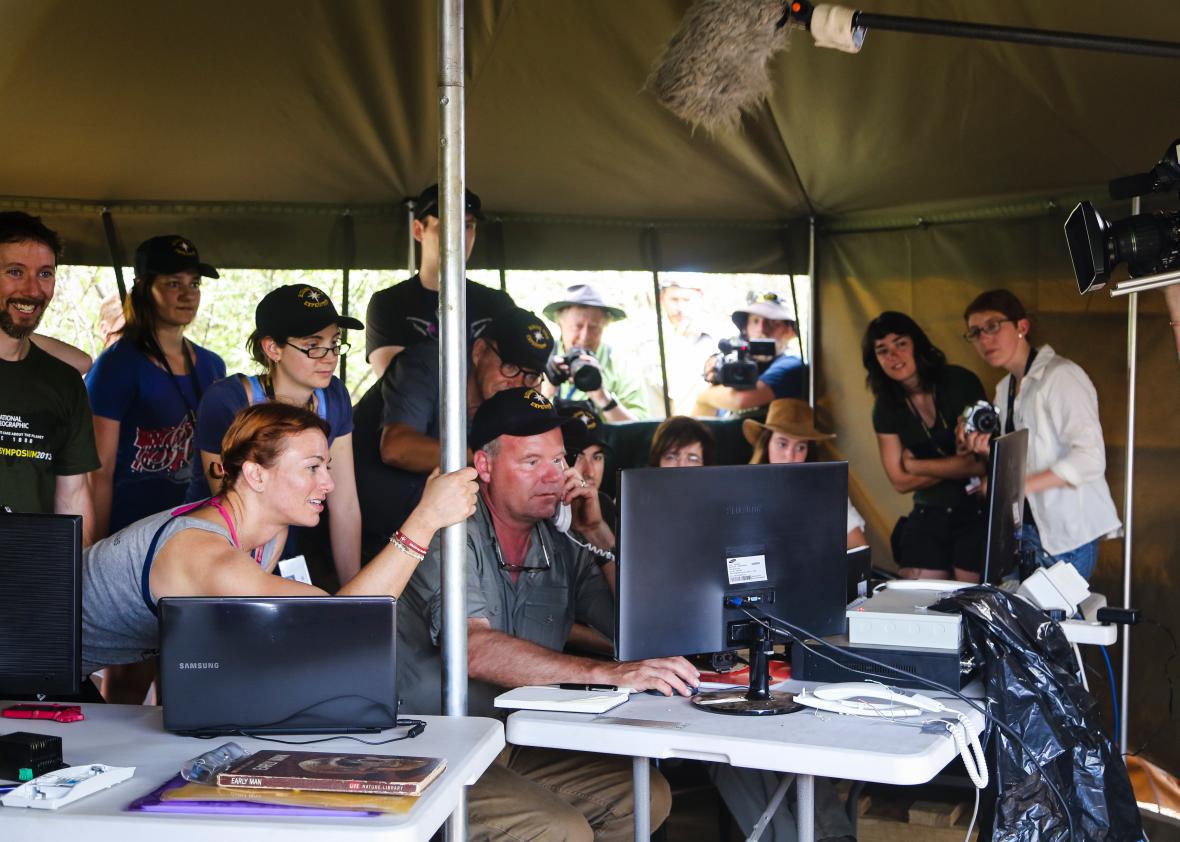Paleoanthropolgy is not the most accessible scientific field. Even the word itself is hard to say! Paleoanthropologists spend their time in remote caves and river basins, sorting what look to the rest of us like piles of rocks. And then they spend years writing papers for academic journals to explain their discovery.
But then you get to talk to them, and they don’t sound anything like their papers. Our science editor, Laura Helmuth, forwarded me an email inviting me to write about a “paleoanthropology story of some import”—which turned out to be the discovery of Homo naledi in a cave in South Africa.
When I talked to lead researcher Lee Berger by Skype last Saturday morning, I could feel his enthusiasm all the way from South Africa. Here is Berger’s account of the moments and days right after a team of cavers came to him with photographs of a very interesting set of bones. (I’ve edited his remarks for clarity.)
Pedro Boshoff had been working for me as a caver for about six weeks. He enlisted Rick Hunter and Steve Tucker to do some of the squeezes. I was informed that they may have discovered something after their first entry to the chamber on Sept. 13, but they didn’t have a camera. On Sept. 24 they went back in. They managed to find me at my house at 9 p.m. on Oct. 1. They rang the doorbell and Pedro said, “You’re going to want to let us in.”
He and Steve walked in and opened up the laptop, and I saw the extraordinary images. The first was a mandible [a jawbone], the second a skull embedded in the dirt, and the third a series of bones. I thought it was a skeleton. We celebrated, I sent them on their way, and I could not sleep.
There were a couple of things that worried me. I had never enlisted amateurs before. I knew the Rising Star system—I’d been in it back in the 1990s. It’s a well-known cave, probably the best-known cave system in South Africa. I was worried the word would get out. In the photographs, some of the bones had been broken. I was unsure what that was due to, whether it was due to previous cavers getting into this chamber and stepping on them. So I didn’t sleep well. I didn’t sleep at all.
So I don’t know if you know, but I am trying for Father of the Year. I have a very tall, skinny 16-year-old son—he was about 15 at that time—named Matthew. I knew I would never get through a 17-centimeter squeeze, which is required to get into this chamber. So I trained him to work one of my scientific cameras with scales. A few days later we crawled into the first chamber. It’s really something to climb up what’s called Dragon’s Back get to the edge of this chute.
There was this little tiny slot. Down I sent Matthew [with two other cavers], and I waited in the dark for 45 minutes. When Matthew came up, he stuck his head out, and of course because I’m going for Father of the Year, I didn’t say “Are you OK?” I said “And?” And he showed me these pictures, and they were extraordinary. It truly did appear there was a skeleton there.
As it turned out, there was far more than a skeleton. Berger put out a call on Facebook for paleoanthropologists with caving skills who could get to South Africa within a few weeks. A month later, the team entered the cave.
